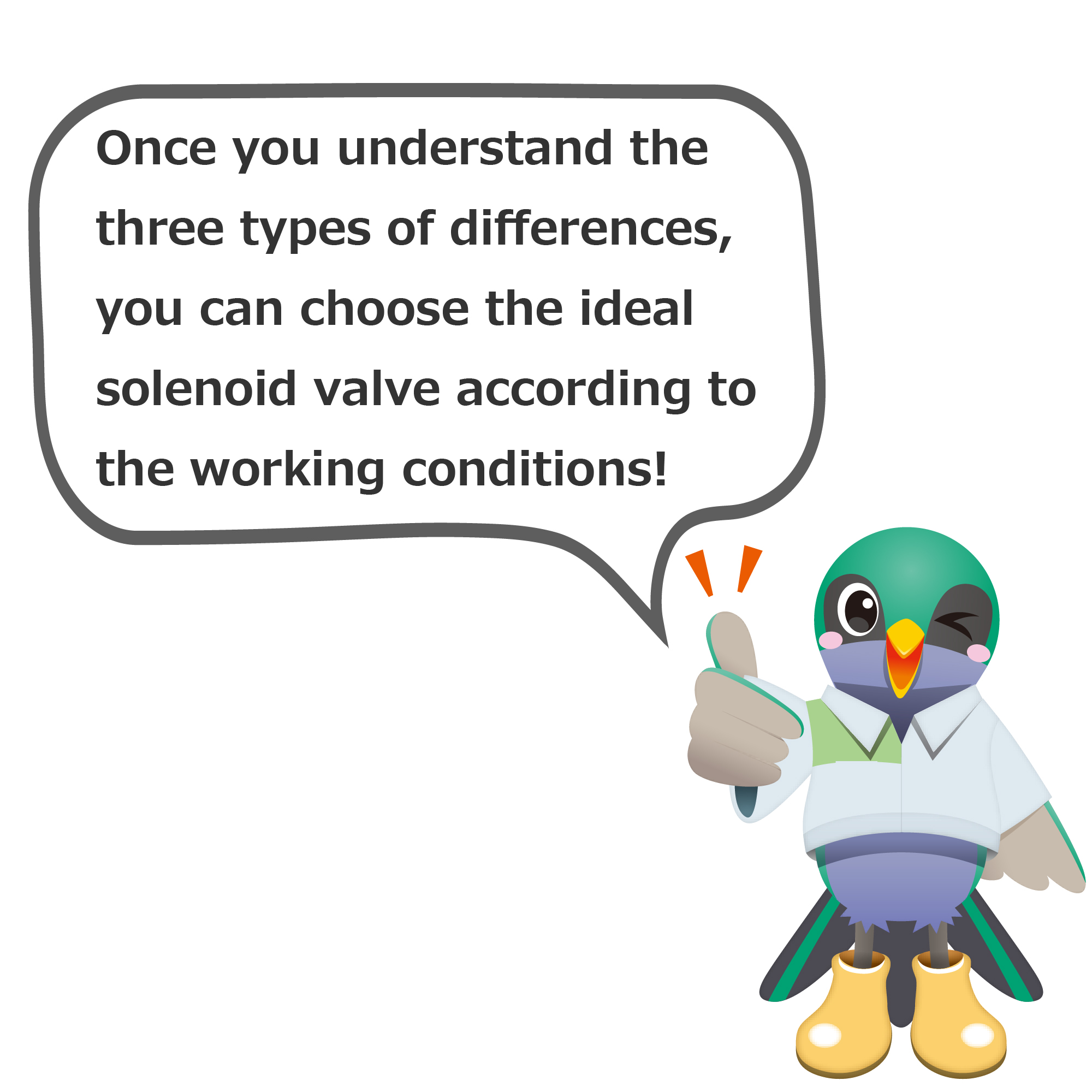Solenoid valve operating method: Have you selected the correct solenoid valve for your fluid?
Differences between direct-acting, pilot-operated, and pilot-kick solenoid valves
There are three types of solenoid valves for fluids: direct acting, pilot operated and pilot kick.
Here are some of the main differences between them!
Differences in operation
Solenoid Valve is a valve that use the power of electromagnets to open and close the valve element.
There are two types: the direct acting type, in which the valve element is directly moved by an electromagnet, and the pilot type, in which the main valve element is moved via a pilot valve that is opened and closed by an electromagnet.
| Direct acting | Pilot operated | Pilot kick | |
|---|---|---|---|
| Principle of operation | The valve is opened and closed only by the attractive force of an electromagnet (solenoid). | The pilot valve is actuated by an electromagnet (solenoid) and operated by the pressure difference of the fluid.A minimum operating pressure differential is required for actuation. | It is operated by the attractive force of the electromagnet (solenoid) and the kick spring, and actuated by the attractive force and fluid pressure.Operation is performed with no load by using a kick spring. |
| Differential pressure | Operates with no load | Required | Operates with no load |
| Mounting orientation | Unrestricted | Unrestricted (within working pressure differential range) | (1) Vertical to horizontal position with the coil on top (2) Vertical position with the coil on top (3) Unrestricted |
| Port size | Mainly small bore size | Medium and large bore sizes | Medium and large bore sizes |
| Typical models | AB Series, etc. | AP/AD Series, etc. | (1) APK11 Series (2) APK21/ADK21 Series (3) ADK11/ADK12 Series |
When selecting a product, the differential pressure, mounting posture, and connection bore size are especially important points to consider.
Now let's see how the operation differs in the image video.
Direct Acting
The direct acting structure opens and closes the valve by energizing the electromagnet to attract the plunger.
The plunger has a structure in which a movable magnetic core and valve element are integrated.
This is recommended for making the device compact and operating at high frequency.
Pilot Operated
The pilot operated solenoid valve is a combination of a direct acting solenoid valve and a main valve as shown in the figure below.
By switching the direct acting solenoid valve and using the internal pressure generated from it, a large main valve can be switched, enabling control of large flow rates with low power consumption.
This is recommended when the piping diameter is large, large flow rates need to be controlled, and power consumption needs to be reduced.
Pilot Kick
The pilot kick solenoid valve performs the same operation as the pilot operated if there is a pressure difference between the plunger (movable iron core) and inlet and outlet sides of the direct acting solenoid valve.
However, this type of solenoid valve has the feature of operating even if the differential pressure (*) is zero, because the kick spring opens the main valve even if no pressure difference is obtained.
*Differential pressure = (inlet pressure) - (outlet pressure).
This is recommended when the min. working pressure differential cannot be obtained with the pilot operated, or when the differential pressure between the inlet side and outlet side cannot be known.

A lineup of solenoid valves categorized by operation
Direct acting 2, 3-port solenoid valve (general purpose valve)
Pilot 2-port solenoid valve (general purpose valve)
Pilot kick 2-port solenoid valve (General purpose valve)
Click here for details of the fluid control components
>> 【Technopedia】Fluid Control Components